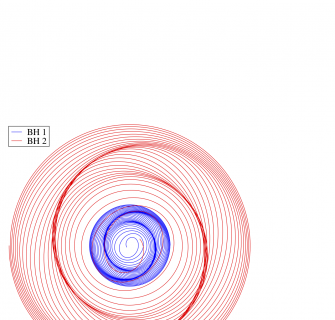CITA-led Team Announces a New Resource for Gravity Wave Detection, a Comprehensive Catalogue of Binary Black Hole Simulations
A catalog of 171 high-quality binary black-hole simulations for gravitational-wave astronomy
CITA post-doctoral fellow Abdul Mroue leads a team of numerical relativists that includes CITA Professor Harald P. Pfeiffer, post-doctoral fellow Tony Chu, and graduate student Sergeii Ossokine and 14 collaborators from the California Institute of Technology, Cornell University, California State University Fullerton, and Oberlin College.Abstract:
Coalescing binary black holes are a primary science target of ground-based gravitational-wave detectors, which require detailed knowledge of the expected waveforms to maximize detections and our understanding of the waves’ sources. This paper presents a catalog of numerical binary black- hole simulations that represents a major advance toward the application of numerical relativity to gravitational-wave data analysis. Specifically, the catalog contains 171 numerical simulations that maintain the high accuracy required for matched filtering while following more orbits (up to 33) than previous simulations. A larger number of orbits allows a more reliable connection to approximate analytical waveforms, which are used to extend numerical waveforms to span the entire frequency range of a detector. The catalog contains 91 precessing binaries, providing the most comprehensive survey of precessing systems to date, and includes waveforms with black-hole spins up to 0.97, mass ratios up to 8, and orbital eccentricities from a few percent to ∼10−4. With this combination of length, accuracy, and parameter-space coverage, the catalog can be used to significantly improve existing gravitational-wave templates (including precessing binaries), to study detection efficiency of gravitational-wave searches, and to quantify systematic biases of parameter estimation of detected gravitational waves. Formidable challenges remain; for example, precession complicates the connection of numerical and approximate analytical waveforms, and vast regions of the parameter space remain unexplored.
A detailed paper will make the large catalogue available in July. A distillation of the research with two generic cases as examples was published on the ArXiv today.
